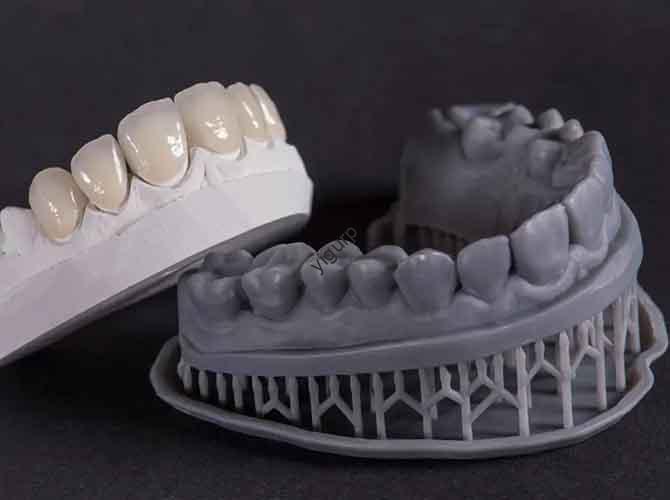En el mundo de fabricación de ritmo rápido de hoy, how do designers turn wild ideas into tangible, high-performance objects? La respuesta está en 3D printing creative models—a technology that blends design freedom, material flexibility, and customization to redefine what’s possible. This article breaks down how these models solve industry pain points, sus ventajas clave, Usos del mundo real, and what the future holds.
What Exactly Are 3D Printing Creative Models?
A 3D printing creative model is a unique three-dimensional object crafted via 3D printing technology, designed to go beyond the limits of traditional manufacturing. Unlike conventional methods (P.EJ., moldura de inyección) that require expensive molds and struggle with complex shapes, these models start as digital designs and are built layer by layer—turning creativity into reality with minimal constraints.
5 Core Advantages of 3D Printing Creative Models
Why are more industries adopting 3D printing creative models? Below is a table highlighting their biggest benefits, along with how they solve common problems:
| Ventaja | How It Solves Problems | Ejemplo del mundo real |
| High Design Freedom | Eliminates “unprintable” shapes; lets designers create organic or geometric structures. | An architect designing a curved building facade—no need to simplify the design. |
| Diversidad material | Matches materials to model needs (fortaleza, flexibilidad, apariencia). | A dentist using biocompatible resin to print a custom tooth crown. |
| Prototipos rápidos | Cuts product development time from weeks to days. | Una empresa de automóviles probando 10 diferentes diseños de tableros en 3 días (VS. 1 mes anterior). |
| Personalización personalizada | Adapta los modelos a las necesidades individuales del usuario. (tamaño, función, estilo). | Un fabricante de prótesis crea una pierna que se adapta a la forma corporal única de un paciente. |
| Lotes pequeños rentables | Sin costos de molde: ideal para 1 a tiradas de producción de 100 unidades. | Una imprenta de inicio 50 fundas para teléfonos de edición limitada sin inversión inicial. |
Where Are 3D Printing Creative Models Used?
Sus aplicaciones abarcan casi todas las industrias., resolviendo desafíos únicos en cada. Aquí hay 4 sectores clave con casos de uso concretos:
- Arquitectura: Los arquitectos utilizan modelos impresos en 3D para mostrar los detalles del edificio (P.EJ., marcos de ventana, escaleras) que los dibujos 2D no pueden transmitir. Por ejemplo, a firm in Berlin printed a 1:50 scale model of a museum—allowing clients to “walk through” the design and spot flaws early.
- Médico: Customization saves lives here. Doctors use patient scans to print 3D-printed implants (P.EJ., reemplazos de cadera) or surgical guides. A 2023 study found these models reduce surgery time by 30% de término medio.
- Aeroespacial: Ligero, complex parts are critical. NASA printed a rocket engine component that was 40% lighter than its metal-cast counterpart—cutting fuel costs for space missions.
- Automotor: Car manufacturers test new parts (P.EJ., manijas de las puertas, soportes) rápidamente. Tesla used 3D printing to prototype a cybertruck component in 24 horas, speeding up its launch by 6 meses.
How Do 3D Printing Creative Models Drive Innovation?
Innovation thrives when ideas can be tested fast—and 3D printing creative models act as a “innovation accelerator.” Here’s a simple 因果链 (cause-effect chain) to explain:
- Designer has an idea → 2. Creates a digital model (1–2 días) → 3. Prints a prototype (horas) → 4. Tests and adjusts (1 día) → 5. Finalizes the product (1 week total).
Compare this to traditional manufacturing:
- Designer has an idea → 2. Creates a mold (2–4 semanas, $10k+) → 3. Produces a prototype (1 semana) → 4. Adjusts the mold (another 2 semanas) → 5. Finalizes the product (2+ months total).
The difference is clear: 3D printing slashes the “idea-to-product” cycle, letting companies iterate faster and stay ahead of competitors.
Future of 3D Printing Creative Models
¿Qué sigue para esta tecnología?? Industry experts predict three key trends by 2027:
- Material Expansion: More sustainable options (P.EJ., recycled plastic, algae-based resin) will become mainstream.
- Faster Printing: Nuevas tecnologías (P.EJ., SLA 3.0) will reduce print time for large models by 50%.
- AI Integration: AI will help designers optimize models for strength and cost—e.g., an AI tool that suggests material tweaks to make a part 20% lighter without losing durability.
La perspectiva de la tecnología de Yigu
En la tecnología yigu, creemos 3D printing creative models are not just a tool—they’re a catalyst for democratizing innovation. Small businesses and independent designers now have the same prototyping power as large corporations, leveling the playing field. We’ve seen clients use our 3D printing solutions to launch products (from custom toys to medical devices) in half the time of their competitors. A medida que mejoran los materiales y la velocidad, we expect these models to become a standard step in every product’s development journey.
Preguntas frecuentes
- q: How much does it cost to print a 3D creative model?
A: Los costos varían según el tamaño, material, y complejidad. A small plastic model (P.EJ., un llavero) puede costar \(5- )20, Mientras que una gran parte de metal (P.EJ., an aerospace component) may cost \(500- )5,000.
- q: Can 3D printing creative models be used for mass production?
A: They’re best for small batches (1–100 unidades) due to speed limits. Para la producción en masa (1,000+ unidades), traditional methods like injection molding are still more cost-effective—though 3D printing is improving for mid-volume runs.
- q: What skills do I need to create a 3D printing creative model?
A: Basic knowledge of 3D design software (P.EJ., Tinkercad for beginners, Fusión 360 for advanced users) is enough to start. Many online tutorials (P.EJ., YouTube, Coursera) can teach you the basics in 1–2 weeks.
